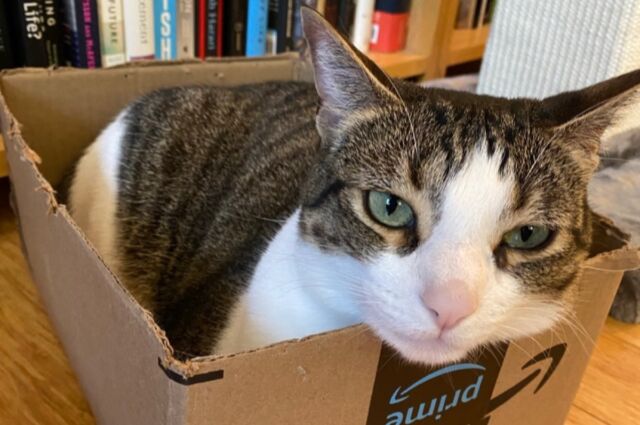What cats’ love of boxes and squares can tell us about their visual perception

🌈 Abstract
The article discusses a study that investigated whether domestic cats are susceptible to visual illusions, specifically the Kanizsa square illusion. The study was conducted as a citizen science project, where cat owners were recruited on Twitter to participate in trials with their pets in the comfort of their own homes.
🙋 Q&A
[01] Introduction
1. What is the rationale behind the study?
- The study was inspired by the observation that cats often sit in small spaces, like boxes, which is generally attributed to their feeling of safety in confined spaces.
- The researchers wanted to investigate whether this behavior could also be related to feline visual perception and their susceptibility to visual illusions.
2. What is the Kanizsa square illusion?
- The Kanizsa square illusion is a type of illusory (subjective) contour, where the brain perceives the presence of a square even though there are no actual lines or edges.
- It is created by arranging four Pac-Man-shaped objects with their "mouths" facing inward to form the corners of a square.
3. What was the goal of the current study?
- The study aimed to investigate whether cats are susceptible to the Kanizsa square illusion, similar to how humans perceive it.
- The researchers wanted to design a study with a larger sample size and observe the cats' behavior in their natural home environment, rather than in a laboratory setting.
[02] Methodology
1. How was the citizen science project conducted?
- Cat owners were recruited on Twitter to participate in the study.
- Participants were provided with instructions and materials (printer, paper, scissors, tape, ruler, sunglasses, and a camera/smartphone) to set up the stimuli in their homes.
- The stimuli included a simple square, the Kanizsa square illusion, and a Kanizsa control (with the Pac-Man mouths facing outward).
- Owners would record their cats' behavior when interacting with the stimuli and upload the videos to a shared Dropbox.
2. What were the criteria for a successful trial?
- If a cat sat or stood with all its legs inside the contours of a stimulus within the first 5 minutes, the trial was considered successful.
- If the cat did not select a stimulus within the first 5 minutes, the trial would end.
[03] Results
1. What were the key findings of the study?
- Out of the 30 cats that completed all 6 trials, 9 cats selected at least one of the stimuli by sitting within its contours for at least 3 seconds.
- Cats selected the Kanizsa illusion just as often as the simple square, and both were selected more often than the control stimulus.
- This suggests that cats treat the illusory square the same way they treat the real square, indicating their susceptibility to the Kanizsa square illusion.
2. What are the limitations of the study?
- The final sample size was small due to participant attrition, a common challenge with citizen science projects.
- The researchers suggest replicating the study in a more controlled laboratory setting, despite the advantages of conducting the trials in the cats' home environment.
[04] Implications and Future Directions
1. What are the potential implications of the study?
- The study provides insights into feline visual perception and their susceptibility to visual illusions, similar to how humans perceive them.
- This could contribute to our understanding of the evolution of visual processing in cats and other animals.
2. What are the future research directions suggested by the authors?
- The authors plan to adapt their previous work on visual illusions in dogs to further study cat behavior and cognition.
- They note that cat cognition research is lacking compared to domestic dogs, and the use of citizen science could help bridge this gap.
Shared by Daniel Chen ·
© 2024 NewMotor Inc.